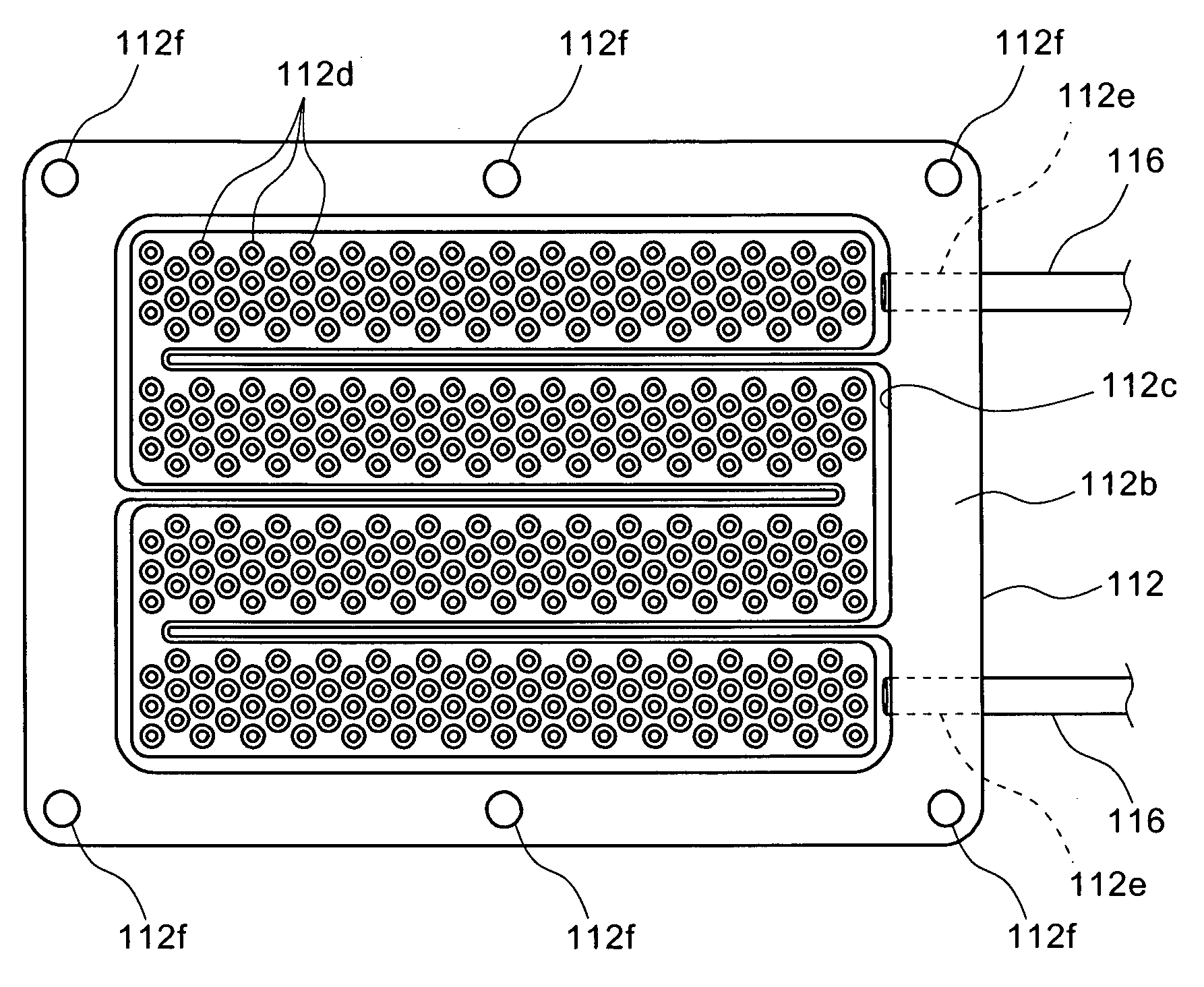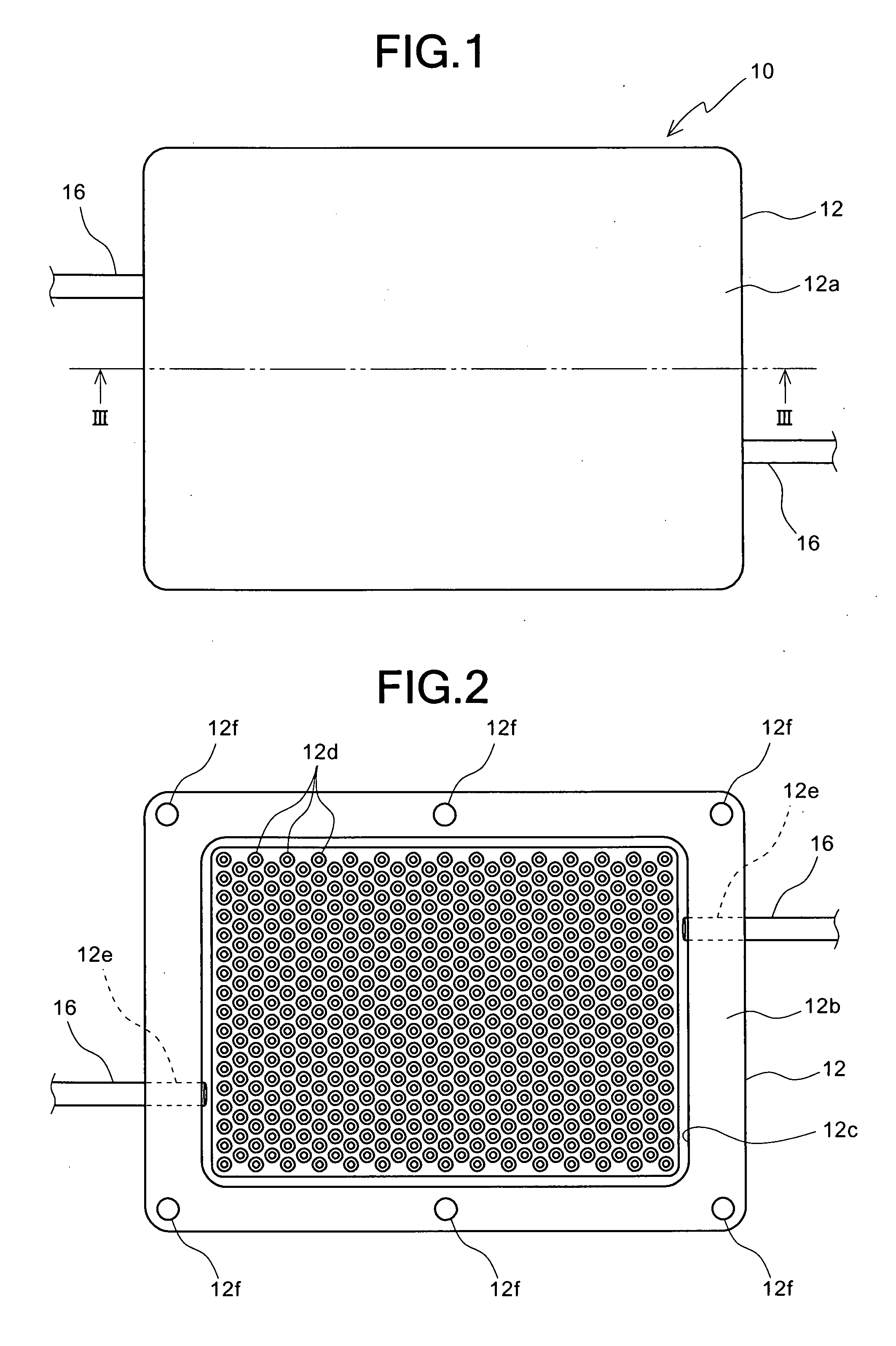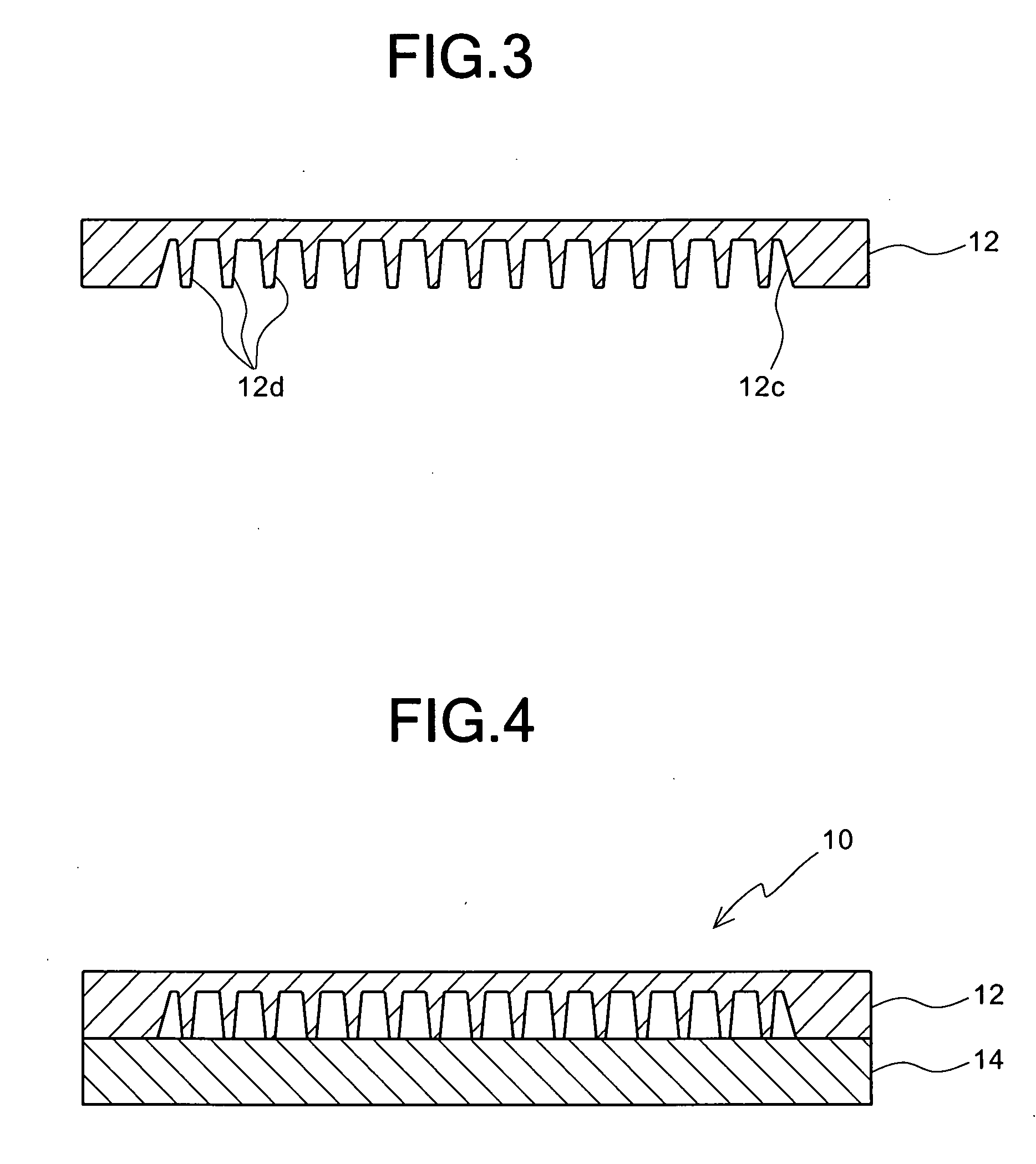Heat radiator
a radiator and heat sink technology, applied in the direction of cooling/ventilation/heating modification, semiconductor device details, semiconductor/solid-state device details, etc., can solve the problem of difficult to stabilize the performance the heat cannot be fully absorbed by semiconductor chips, and the cooling power of the air-cooling fin is generally lower than that of the water-cooling fin. achieve the effect of simple structure and high cooling power
- Summary
- Abstract
- Description
- Claims
- Application Information
AI Technical Summary
Benefits of technology
Problems solved by technology
Method used
Image
Examples
first preferred embodiment
[0033]FIGS. 1 through 4 show the first preferred embodiment of a heat radiator according to the present invention. FIG. 1 is a plan view of a heat radiator in this preferred embodiment, and FIG. 2 is a bottom view of a radiating member of the heat radiator of FIG. 1 before a lid member is mounted on the radiating member. FIG. 3 is a sectional view of the radiating member of the heat radiator taken along line III-III of FIG. 1 before a lid member is mounted on the radiating member, and FIG. 4 is a sectional view of the heat radiator of FIG. 1 when a lid member is mounted on the radiating member.
[0034]As shown in these figures, the heat radiator 10 in this preferred embodiment comprises: a flat-plate-shaped radiating member (first member) 12 of a metal, such as aluminum or an aluminum alloy, the planar shape of which is a substantially rectangular shape; and a flat-plate-shaped lid member (second member) 14 of a metal, such as aluminum or an aluminum alloy, the planar shape of which i...
second preferred embodiment
[0040]FIG. 5 shows the reverse of a radiating member of the second preferred embodiment of a heat radiator according to the present invention. The heat radiator in this preferred embodiment substantially has the same construction as that of the heat radiator 10 in the first preferred embodiment, except that a tortuously extending (or meandering or snaking) recessed portion 112c is formed by connecting four recessed portions, which extend in parallel to each other in longitudinal directions, in place of the substantially rectangular recessed portion 12c of the radiator 10 in the first preferred embodiment, and that a pair of through holes 112e pass through the peripheral portion of the radiating member 112 from both ends of the recessed portion 112c to the side face of the radiating member 112. Therefore, reference numbers in FIG. 5 are shown by adding 100 to the reference numbers given to the same structural portions as those of the heat radiator 10 in the first preferred embodiment...
PUM
 Login to View More
Login to View More Abstract
Description
Claims
Application Information
 Login to View More
Login to View More - R&D
- Intellectual Property
- Life Sciences
- Materials
- Tech Scout
- Unparalleled Data Quality
- Higher Quality Content
- 60% Fewer Hallucinations
Browse by: Latest US Patents, China's latest patents, Technical Efficacy Thesaurus, Application Domain, Technology Topic, Popular Technical Reports.
© 2025 PatSnap. All rights reserved.Legal|Privacy policy|Modern Slavery Act Transparency Statement|Sitemap|About US| Contact US: help@patsnap.com



